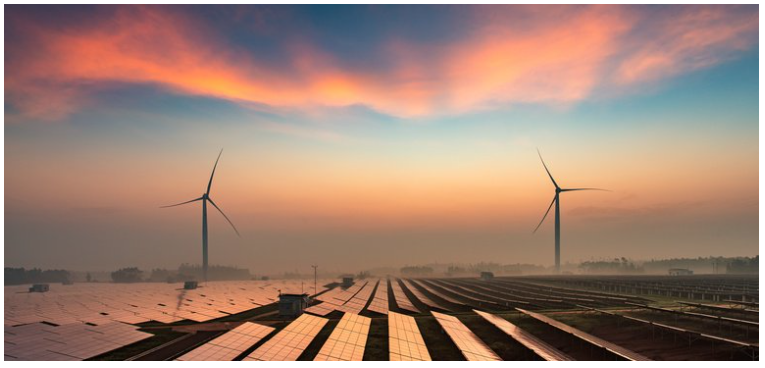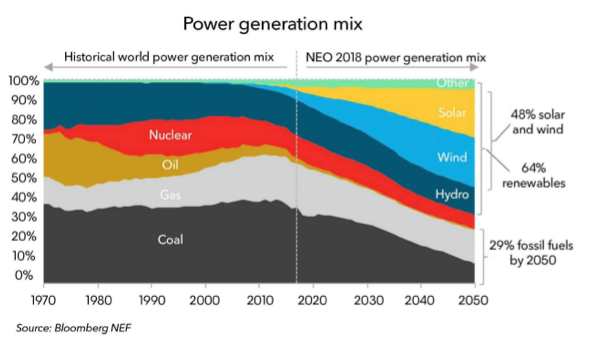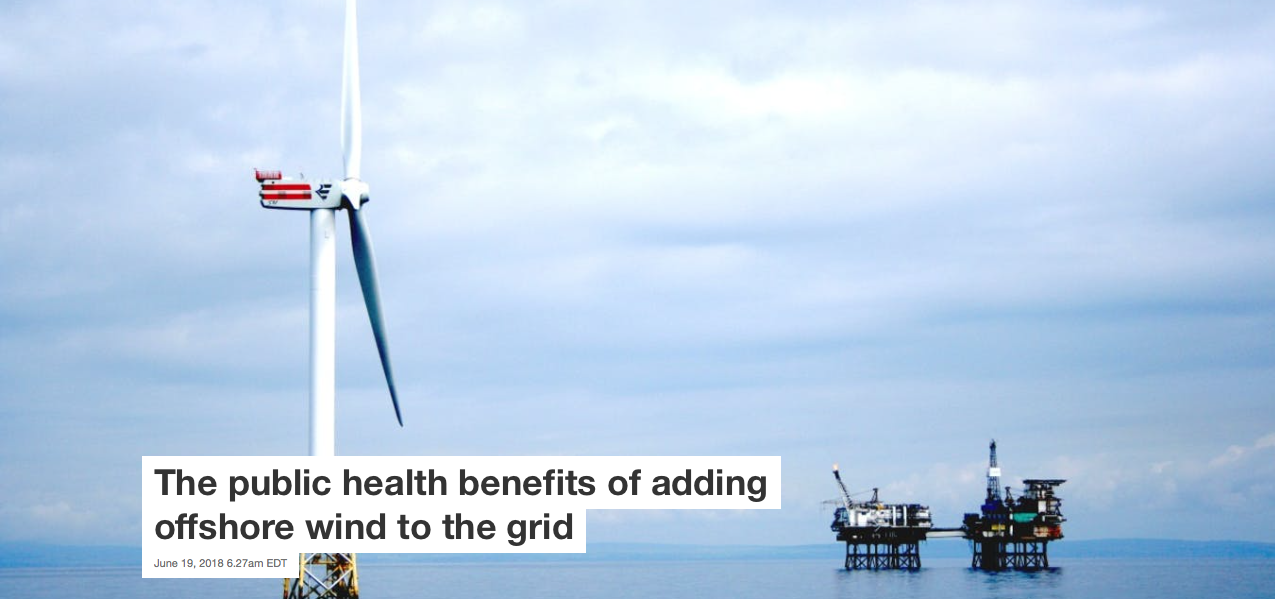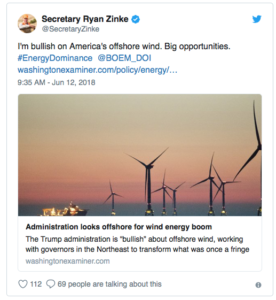
Jun 26, 2018
Source: North American Windpower, June 21, 2018
Author: Betsey Lillian
Source Link: https://nawindpower.com/energy-jobs-for-our-heroes-act-would-help-veterans-secure-clean-energy-careers
A newly introduced bipartisan bill aims to help U.S. veterans gain training and credentials to secure jobs in the fast-growing sectors of the low- and zero-carbon-emissions energy industry.
U.S. Sens. Tammy Duckworth, D-Ill., Lindsey Graham, R-S.C., and Michael Bennet, D-Colo., have introduced the Energy Jobs for our Heroes Act of 2018, which is designed to help ease the transition back to civilian life for servicemembers and strengthen the economy by connecting employers in solar, wind, nuclear and cyber energy industries with veterans.
“I am proud to partner with Sens. Graham and Bennet on this bipartisan legislation to help servicemembers transition back to civilian life and find good-paying jobs in clean, renewable energy,” says Duckworth. “Our bill will provide servicemembers and veterans with the training they need to work in some of our nation’s fastest-growing industries while also helping clean energy companies – which already employ veterans at high rates across the country – find highly skilled and dedicated workers as they experience exponential growth and provide more of our nation’s energy supply.”
“I’m very excited to be a part of this effort to do two great things for our country: help veterans find jobs and boost the clean energy economy,” says Graham. “If there was ever a win-win, it is this bill. I’m really pleased to be working with Sens. Duckworth and Bennet on this important legislation.”
“For years, we’ve worked to ensure veterans are equipped to enter the clean energy industry, especially in Colorado,” adds Bennet. “This bipartisan bill will create a pathway so our veterans, who have put their lives on the line for our country, have the necessary skills and training to compete in our 21st-century economy. We’re encouraged by the administration’s commitment to prioritize this legislation.”
During a Senate committee hearing in March, Duckworth received a commitment from Rick Perry, U.S. Department of Energy (DOE) secretary, to work on advancing the legislation.
Specifically, the bill would direct the DOE to partner with the U.S. Department of Defense to develop an “Energy Ready Vets Program.” The program would be led by an administrator with military experience and would offer veterans and members of the Armed Forces six-month internships to gain hands-on training. It would also establish a labeling program that recognizes companies that are hiring graduates of these programs in order to encourage them to hire veterans.
Citing the DOE, the senators say veterans currently make up 11.5% and 11.1% of the wind and solar workforces, respectively.
Supporting the newly proposed bill is the American Wind Energy Association (AWEA). In a statement, Bree Raum, AWEA’s vice president of federal affairs, says, “AWEA endorses the Energy Jobs for our Heroes Act of 2018 and applauds Sens. Tammy Duckworth, Lindsey Graham and Michael Bennet for their leadership in helping veterans enter the energy workforce after serving their country. The wind industry is proud that we hire veterans at a rate that is 72 percent higher than the national average. This legislation will help us welcome even more of our nation’s heroes into the American wind energy workforce.”

Jun 21, 2018
Source: Utility Dive
Author: Robert Walton
Source Link: https://www.utilitydive.com/news/world-on-track-for-50-renewables-by-2050-says-bloomberg-energy-outlook/526052/
__________________
Dive Brief:
- A new analysis from Bloomberg New Energy Finance predicts a global electricity supply mostly fueled by carbon-free sources by 2050, with a “chilling” outlook for fossil fuel generators and little hope for a nuclear resurgence with today’s technology.
- The New Energy Outlook report concludes a “dramatic shift” to “50 by 50” is being driven by cheap renewables generation and falling battery costs. Solar and wind costs are expected to drop 71% and 58%, respectively, by 2050.
- Worldwide, the report predicts $548 billion will be invested in battery capacity by 2050, with two-thirds of that at the grid level and the remaining third installed behind-the-meter.
Dive Insight:
In total, Bloomberg’s new analysis sees $11.5 trillion being invested globally in new power generation capacity from 2018 to 2050, with the majority going towards renewables. About $8.4 trillion will be spent on wind and solar, and another $1.5 trillion on other zero-carbon technologies such as hydro and nuclear.
“The arrival of cheap battery storage will mean that it becomes increasingly possible to finesse the delivery of electricity from wind and solar, so that these technologies can help meet demand even when the wind isn’t blowing and the sun isn’t shining,” BNEF’s Seb Henbest said in the report. “The result will be renewables eating up more and more of the existing market for coal, gas and nuclear.”
 According to the report, since 2010, the price of lithium-ion batteries has declined 79%. Now, stand-alone batteries are increasingly cost-competitive with open-cycle gas plants and other options such as pumped hydro. “The conclusions are chilling for the fossil fuel sector,” Elena Giannakopoulou, head of energy economics at BNEF, said in the report.
According to the report, since 2010, the price of lithium-ion batteries has declined 79%. Now, stand-alone batteries are increasingly cost-competitive with open-cycle gas plants and other options such as pumped hydro. “The conclusions are chilling for the fossil fuel sector,” Elena Giannakopoulou, head of energy economics at BNEF, said in the report.
In the United States, Bloomberg expects batteries to grow in significance from around 2030, to support renewables penetration. Utilities will continue to replace older coal and nuclear with cheaper gas and renewables, though Bloomberg adds the qualifier, “assuming there is no lasting federal policy intervention” to keep them operating.
The Trump Administration has been working to develop policies to support nuclear and coal plants, going so far as to propose unprecedented market intrusions. For coal plants, however, many in the power industry think there is little that can be done to stop the fuel’s downward trend in the U.S.
“Coal and nuclear are pushed out by age and economics, such that by 2050 both nuclear and coal have almost disappeared from the electricity mix,” the report predicts for the United States. “We do not anticipate a U.S. nuclear renaissance with current technology.”
The struggle of emissions-free nuclear plants has created a dilemma for U.S. policy makers who want to keep the plants online but are seeing them struggle economically and retire. Many in the nuclear industry are looking to smaller, modular reactors as a way to revive the struggling technology.
The smaller nuclear plants could start at prices as low as $1 billion to $1.5 billion to construct, according to some experts. While many believe SMRs could propel new growth in the nuclear industry, there may be less hope for fossil fuels according to Bloomberg.
“The economic case for building new coal and gas capacity is crumbling, as batteries start to encroach on the flexibility and peaking revenues enjoyed by fossil fuel plants,” the report finds.
SaveSave

Jun 20, 2018
Source: The Conversation
Author: Jonathan Buonocore, Research Associate, Center for Climate, Health and the Global Environment, Harvard T.H. Chan School of Public Health, Harvard University
Link to source site: https://theconversation.com/the-public-health-benefits-of-adding-offshore-wind-to-the-grid-98228
________________
New plans to build two commercial offshore wind farms near the Massachusetts and Rhode Island coasts have sparked a lot of discussion about the vast potential of this previously untapped source of electricity.
But as an environmental health and climate researcher, I’m intrigued by how this gust of offshore wind power may improve public health. Replacing fossil fuels with wind and solar energy, research shows, can reduce risks of asthma, hospitalizations and heart attacks. In turn, that can save lives.
So my colleagues and I calculated the health impact of generating electricity through offshore wind turbines – which until now the U.S. has barely begun to do.
Greening the grid
New England gets almost none of its electricity from burning coal and more than three-quarters of it from burning natural gas and operating nuclear reactors. The rest is from hydropower and from renewable energy, including wind and solar power and the burning of wood and refuse.

The health benefits of moving to wind power would be significant, particularly for regions that rely more heavily on coal and oil to generate electricity.
Replacing coal and oil with offshore wind will reduce emissions of air pollutants like fine particulate matter, nitrogen oxide and sulfur dioxide. These pollutants can form smog, soot and ozone. When people downwind are exposed to them, they can develop incapacitating and deadly diseases.
Saving 13 lives a year
When my colleagues and I studied what would happen if offshore wind farms were installed off the Mid-Atlantic coast, we determined that they would bring about health and climate benefits.
We projected that a 1,100-megawatt wind farm off the coast of New Jersey, a bit smaller than the two approved offshore wind farms, would save around 13 lives per year.
When connected to the grid, this new source of power would make carbon emissions decline by around 2.2 million tons every year, the equivalent to taking over 400,000 cars off the road.
Offshore wind faces a number of technical and economic hurdles, including installation of transmission lines. But at least theoretically, this form of renewable energy could generate enough electricity to supply
all the electricity the U.S. consumes and then some, according to the Energy Department. Members of the Trump administration, including Interior Secretary
Ryan Zinke, appear to support offshore wind.
While it may not be possible, practical or necessary to build offshore wind everywhere, even replacing a small portion of the nation’s fossil-fueled electricity will be good for everyone’s health.
SaveSave
SaveSave
SaveSave
SaveSave
SaveSave
SaveSave
SaveSave
SaveSave

Apr 27, 2018
Congratulations to Lucy Tafur, Engineer Project Associate with AWS Truepower, our new 2018 WINDPOWER Scholarship Recipient!
Lucy is a San Diego native and a recent Environmental Engineering graduate from UC San Diego. She first became involved with the wind industry as an intern for a wind farm developer and now works full time as a Renewable Energy Analyst for a consultancy company. She is excited for the opportunity to attend this year’s WINDPOWER conference as it offers her the opportunity to further her professional development by exposing her to the latest industry technologies and allowing her to network with established professionals in the field. She is passionate about renewable technology and the positive environmental impacts these present. Ultimately, she hopes to use the knowledge gained during the conference to assist women aspiring to join the field and continue empowering young girls from underrepresented communities to pursue careers in science and engineering.
We look forward to hearing an event recap from Lucy after the conference!








